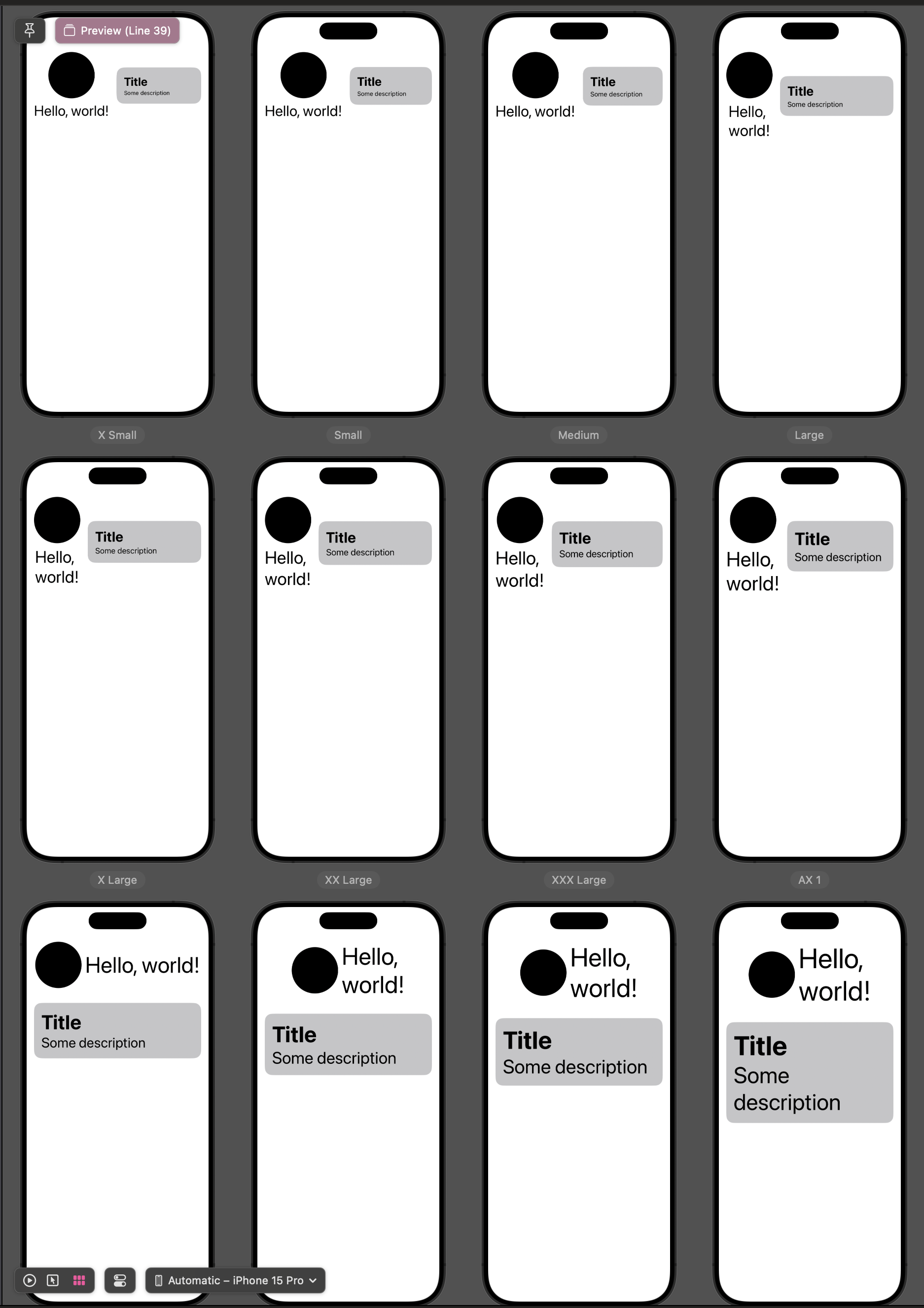In the world of mobile app development, accessibility is not just a feature; it’s a necessity.
Designing your app to be accessible to everyone, including people with disabilities, is not only a good practice but also opens your app to a wider audience. One of the challenges in achieving this is to make your UI adaptable to different text sizes, especially when you’re working with stacks like HStack and VStack in SwiftUI. That’s where AdaptableStack comes in handy.
Table Of Contents:
What is an AdaptableStack?
AdaptableStack is a custom SwiftUI view that dynamically switches between HStack and VStack based on the user’s dynamic text size settings. This is particularly useful for supporting accessibility features like Dynamic Type, which allows users to adjust the text size across the system and in apps that support it.
Here’s the code for AdaptableStack:
Note 1: You could opt to create two separate components (AdaptableHStack and AdaptableVStack) instead of one to avoid the axis parameter, and make the code more similar to the originals HStack and VStack.
Note 2: HStackLayout and VStackLayout require iOS16+ as target.
Why is it important?
Accessibility: The primary advantage of using AdaptableStack is to improve the accessibility of your app. By automatically adjusting the layout based on the user’s text size settings, you’re making your app more accessible to users with visual impairments.
User Experience: Another benefit is the enhanced user experience. Not all users are comfortable with the default text size, and some might need larger text to read comfortably. AdaptableStack ensures that your app’s UI adjusts itself to meet these varying needs, providing a better experience for all users.
How to use it?
Using AdaptableStack is as simple as using SwiftUI’s native HStack or VStack. Here’s a quick example:
struct ContentView: View {
var body: some View {
AdaptableStack(.horizontal, vSpacing: 32, hSpacing: 16) { // -> Starts as HStack, switches to VStack once the threshold is surpassed.
AdaptableStack(.vertical) { // -> Starts as VStack, switches to HStack once the threshold is surpassed.
Circle()
.frame(width: 100, height: 100)
Text("Hello, world!")
.font(.largeTitle)
}
VStack(alignment: .leading) { // -> Always VStack
Text("Title")
.font(.title)
.bold()
.frame(maxWidth: .infinity, alignment: .leading)
Text("Some description")
.font(.subheadline)
}
.frame(maxWidth: .infinity)
.padding()
.background {
RoundedRectangle(cornerRadius: 16)
.foregroundStyle(.placeholder)
}
}
.padding()
}
}
#Preview {
VStack {
ContentView()
Spacer()
}
}
The Result

Demo:
Whereas without the AdaptableStack, here is how the same code would look:

Conclusion
AdaptableStack offers a simple yet effective way to make your SwiftUI apps more accessible and user-friendly.
By taking into account the user’s dynamic text size settings, it ensures that your app’s UI is adaptable and inclusive.
So the next time you’re working on a SwiftUI project, consider using AdaptableStack to make your stacks more adaptable and your app more accessible.